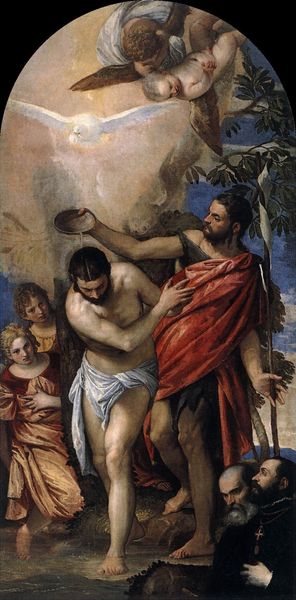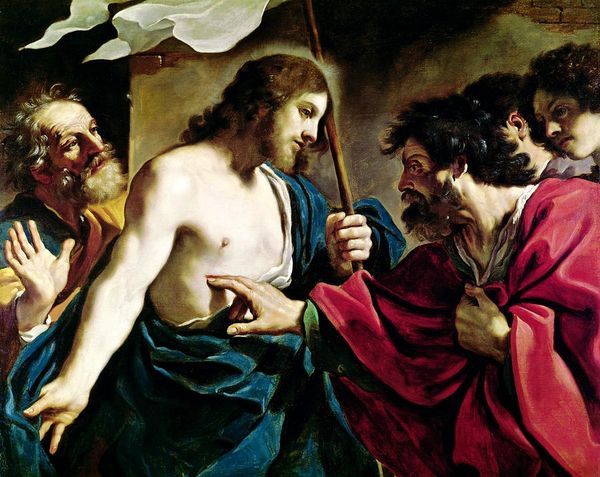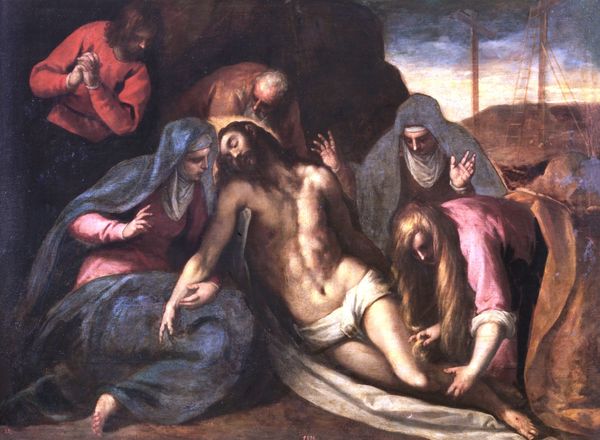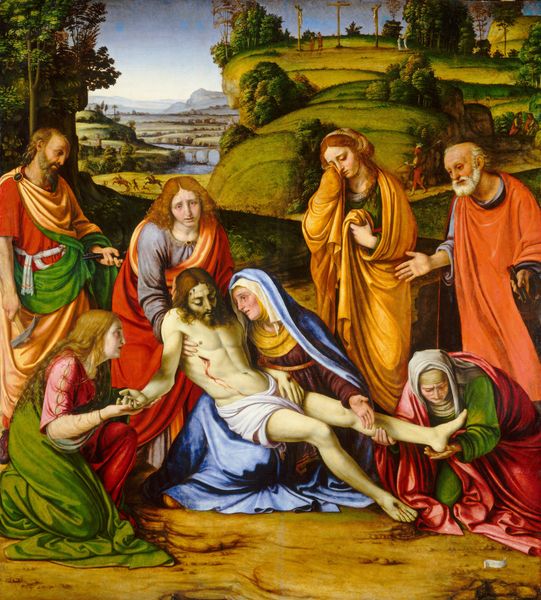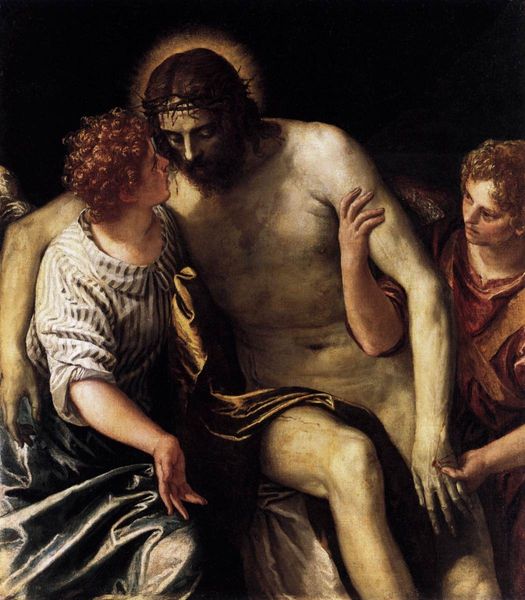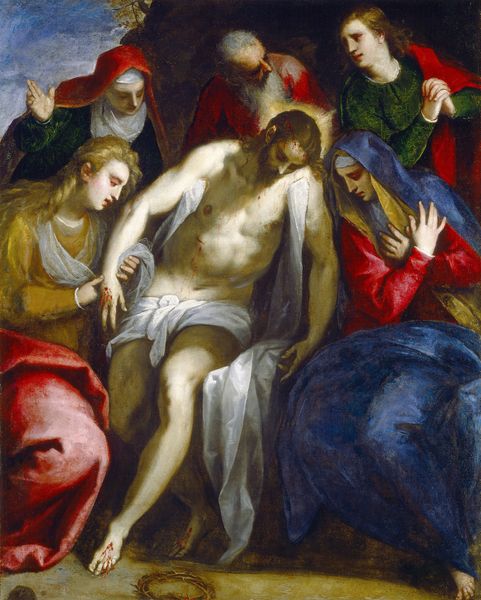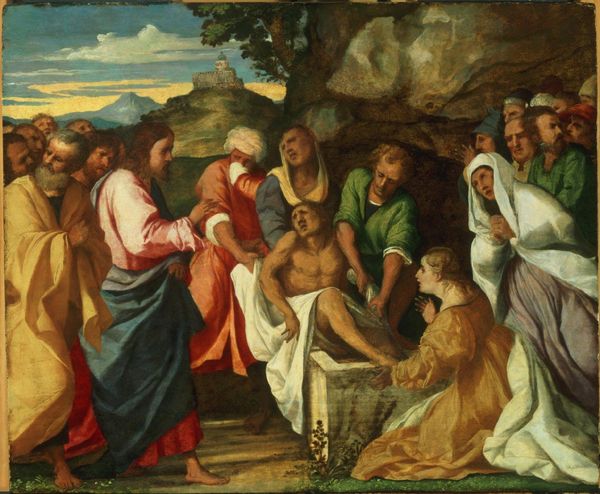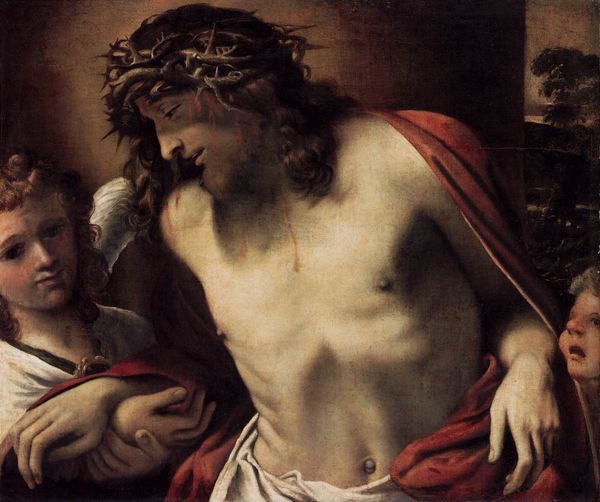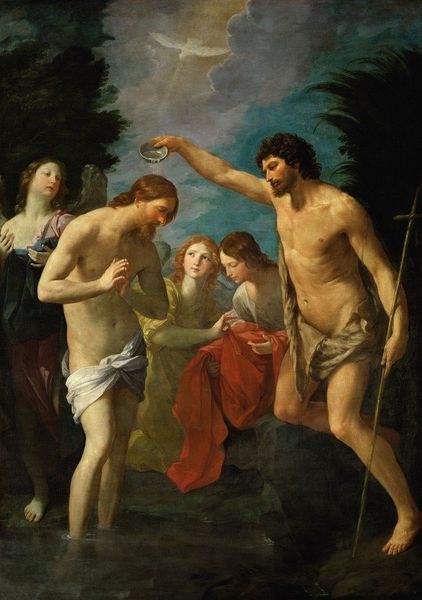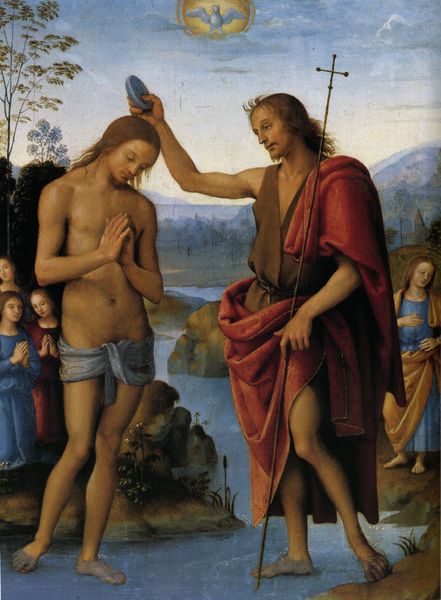
painting, oil-paint
#
baroque
#
painting
#
oil-paint
#
landscape
#
figuration
#
oil painting
#
history-painting
Copyright: Public Domain: Artvee
Curator: Ah, yes, this is Rubens' “Christ Appears to Mary Magdalene," likely painted sometime between 1610 and 1690. Oil on canvas, of course. Editor: Well, my first impression is quiet astonishment. There's such tenderness in Christ's posture, and Mary Magdalene seems caught between disbelief and profound hope. The garden feels almost dreamlike. Curator: Absolutely. Rubens masterfully depicts this pivotal moment after the resurrection. Consider the symbol-laden composition. Mary Magdalene, kneeling with her ointment jar abandoned, initially mistakes Christ for a gardener. Editor: Yes, the gardener! How wonderful. She's grounded, earthy, reaching towards a reality she can barely grasp, symbolized by the tools, the garden itself, yet bathed in the glorious light radiating from Christ. The ointment jar suggests mourning and the physical realm versus spiritual. It's a powerful contrast. Curator: Precisely. It's a scene laden with iconographic weight. The garden itself harkens back to Eden, suggesting renewal and the overturning of original sin. Mary's discarded jar signifies the shift from earthly grief to spiritual awakening. And Rubens captures this with such dynamic tension! Look at their hands, not quite touching... Editor: That almost-touch is so vital. The agony of separation is turning to an ecstatic awakening. Even his garb -- he's basically just wearing this red cloak, and holding the shovel… He doesn’t exactly appear in glorious attire! More as if in the flesh still…vulnerable. This isn’t some detached divine apparition. This is human, tangible. Curator: The light plays a huge role. He’s illuminating not just the garden but illuminating Mary Magdalene and, in a sense, calling her forth. The background landscape is kind of dark…until Christ shows up, bathed in golden light. Editor: It's such a testament to love, faith, and how even amidst despair, the possibility of rebirth exists. Rubens captured a moment of profound personal and universal transformation, even though some people don't understand the history or importance of faith in this subject matter, I find something inspiring nonetheless. Curator: Agreed. Rubens was really good at combining his mastery and this dramatic visual language with this deep sense of humanism. Editor: Yes! What a gift it is to find that bridge across time, carried within the symbols and the artist's intuitive rendering. It definitely moves me.
Comments
No comments
Be the first to comment and join the conversation on the ultimate creative platform.

